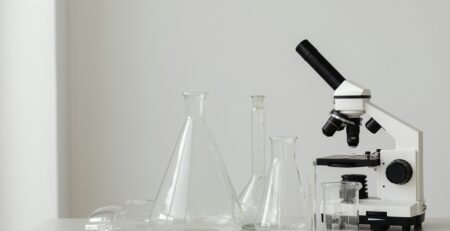1
Sep
Autoclaving Laboratory Glassware: What Can and Can’t Be Sterilised
Autoclaving remains the gold standard for sterilisation in laboratories across Australia. By applying pressurised steam at 121–134 °C, it ensures glassware and consumables are free of microorganisms before use. However, not all labware is suitable for autoclaving, and improper practices can lead to breakage, contamination, or compliance issues. Understanding what can and cannot be autoclaved helps schools, universities, and industry labs maintain safety and efficiency.
Why Autoclaving Matters
Sterilisation is essential for microbiology, medical research, and quality control laboratories. Unlike dry heat, autoclaving penetrates quickly, eliminating bacteria, spores, and viruses. For laboratories using glassware daily, knowing which items withstand the process is critical for both accuracy and longevity.
LabChoice Australia supplies BORO 3.3 borosilicate glassware, tested for durability under repeated autoclave cycles, making it a trusted choice for Australian labs.
What Can Be Autoclaved
- BORO 3.3 Glassware: Beakers, flasks, cylinders, funnels, and desiccators designed for high thermal resistance.
- Stainless Steel Accessories: Forceps, clamps, and wire gauze mats.
- Certain Plastics: Polypropylene (PP) and polycarbonate (PC) items marked “autoclavable.”
For example, a Melbourne microbiology lab autoclaves LabChoice BORO 3.3 Erlenmeyer flasks daily for media preparation without any structural failures.
What Should Not Be Autoclaved
- Soda-Lime Glassware: Prone to cracking under thermal shock.
- Polystyrene (PS), PVC, or PET Plastics: These deform or release toxic fumes.
- Sealed Containers: Risk of explosion under pressure.
- Volatile Chemicals: Solvents such as ethanol, chloroform, and acetone are unsafe to autoclave.
Australian schools have reported breakages when using low-grade soda-lime beakers, reinforcing the need for certified BORO 3.3 glassware.
Best Practices for Safe Autoclaving
- Use vented caps or loosened lids to prevent pressure build-up.
- Avoid overfilling glassware; leave at least one-third empty for steam circulation.
- Allow gradual cooling before removing from the autoclave.
- Inspect glassware regularly for scratches or stress marks.
| Safe for Autoclave | Not Safe for Autoclave |
|---|---|
| BORO 3.3 glass beakers/flasks | Soda-lime glass |
| Polypropylene (PP) plastics | Polystyrene (PS) plastics |
| Stainless steel instruments | Sealed containers/volatile solvents |
FAQs
Can I autoclave amber glassware?
Yes, LabChoice BORO 3.3 amber bottles are suitable for autoclaving, but caps must be loosened.
How many autoclave cycles can glassware withstand?
High-quality BORO 3.3 glassware can endure hundreds of cycles if handled properly.
Can I autoclave chemicals inside glassware?
Only aqueous media; never solvents or volatile compounds.
Do polypropylene desiccators survive autoclaving?
Some models are autoclavable, but always check the manufacturer’s specifications.
📚 References
Standards & Specifications
- ISO 17665-1:2006 – Sterilization of health care products — Moist heat — Part 1: Requirements for the development, validation and routine control of a sterilization process for medical devices. International Organization for Standardization.
https://www.iso.org/standard/31498.html - ISO 3585:1998 – Borosilicate glass 3.3 — Properties (thermal resistance and autoclaving suitability). International Organization for Standardization.
https://www.iso.org/standard/26264.html - ASTM E925-20 – Standard Practice for Monitoring the Calibration of Autoclaves. ASTM International.
https://www.astm.org/e0925-20.html - ASTM E2197-17 – Standard Quantitative Disk Carrier Test Method for Determining Bactericidal, Virucidal, Fungicidal, Mycobactericidal, and Sporicidal Activities of Liquid Chemicals. ASTM International (relevant for sterilisation standards).
https://www.astm.org/e2197-17.html
Academic & Safety Guides
University of Melbourne – School of Biomedical Sciences – Autoclaving Procedures and Safety for Research Labs. Melbourne, Australia.ons with confidence.
Centers for Disease Control and Prevention (CDC) – Guidelines for Disinfection and Sterilization in Healthcare Facilities. U.S. Department of Health & Human Services.
https://www.cdc.gov/infectioncontrol/guidelines/disinfection
American Chemical Society (ACS) – Laboratory Sterilisation Techniques: Safe Use of Autoclaves. ACS Education Resources.
https://www.acs.org/safety
CSIRO – Laboratory Safety Guidance – Safe Autoclave Operation in Australian Research Facilities. CSIRO, Australia.
https://www.csiro.au

